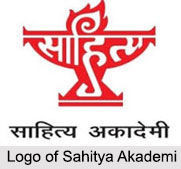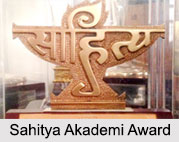 Sahitya Akademi is an administration enthusiastic to the encouragement of literature in the languages of India. It is supported by the Indian government. It is in Rabindra Bhavan near Mandi House in Delhi. Sahitya Akademi organises national and provincial workshops and seminars; provides study and travel scholarships to authors; publishes books and journals, including the Encyclopaedia of Indian Literature; and presents the yearly Sahitya Akademi Award.
Sahitya Akademi is an administration enthusiastic to the encouragement of literature in the languages of India. It is supported by the Indian government. It is in Rabindra Bhavan near Mandi House in Delhi. Sahitya Akademi organises national and provincial workshops and seminars; provides study and travel scholarships to authors; publishes books and journals, including the Encyclopaedia of Indian Literature; and presents the yearly Sahitya Akademi Award.
Establishment of Sahitya Akademi
Sahitya Akademi was founded on 12th March 1954. The thought of constituting a National Academy of Letters in India was considered by the royal British government, and in 1944 a proposal from the Royal Asiatic Society of Bengal for the development of a `National Cultural Trust` was, in principle, established.
History of Sahitya Akademi
The inventive plan envisaged of 3 institutions devoted to the visual arts, performing arts, and letters. The Government of India carried out this proposal, constituting a National Academy of Letters, called the `Sahitya Akademi` by an administration resolution on 15th December 1952.
The first General Council of the Akademi included members such as S. Radhakrishnan, Abul Kalam Azad, C. Rajagopalachari, K.N. Panikkar, K.M. Munshi, Zakir Hussain, Umashankar Joshi, Mahadevi Varma, D. V. Gundappa, Ramdhari Singh Dinkar, and was presided over by the Prime Minister, Jawaharlal Nehru.
Languages of Sahitya Akademi
 The Sahitya Akademi maintains work in English, Hindi, and Urdu as well as the following provincial languages:
The Sahitya Akademi maintains work in English, Hindi, and Urdu as well as the following provincial languages:
•Assamese
•Bengali
•Bodo
•Dogri
•Gujarati
•Kannada
•Kashmiri
•Konkani
•Maithili
•Malayalam
•Manipuri
•Marathi
•Nepali
•Oriya
•Punjabi
•Rajasthani
•Sanskrit
•Santhali
•Sindhi
•Tamil
•Telugu
Structure of Sahitya Akademi
Sahitya Akademi initially functioned under the managerial order, but was afterwards registered as a society under the Indian Societies Registration Act, 1860. The constitution of the Sahitya Akademi states that it shall be run by three authorities namely a General Council, an Executive Board, and a Finance Committee. The General Council of the Sahitya Akademi functions for a term of 5 years, following which it is reconstituted. It meets once in a year and performs some important functions. The Executive Board of the Sahitya Akademi exercises decision-making authority and is accountable for supervising and controlling the Akademi`s work. It organizes the Akademi`s yearly budget, appoints the desk, and prepares panels of nominees for the General Council to consider and select members. The Finance Committee`s responsibility is to set down the boundary for total expenditure by the Sahitya Akademi in a financial year.
Publications of Sahitya Akademi
The Sahitya Akademi publishes a number of regular publications, in addition to its bi-monthly journal, Indian Literature. It commences bibliographic surveys, performs translation workshops, seminars, and a yearly festival of letters. It publishes the National Bibliography of Indian Literature. The Sahitya Akademi has stated that the second series will cover up literature published between 1954 and 2000. It holds over 100 programmes related to Indian literature every year from corner to corner of India.
The Sahitya Akademi`s Annual Festival of Letters is held in February and is the event at which it presents its awards. Samvatsar Annual Lecture is structured by the Sahitya Akademi and is delivered in the Akademi`s Annual Festival of Letters.













